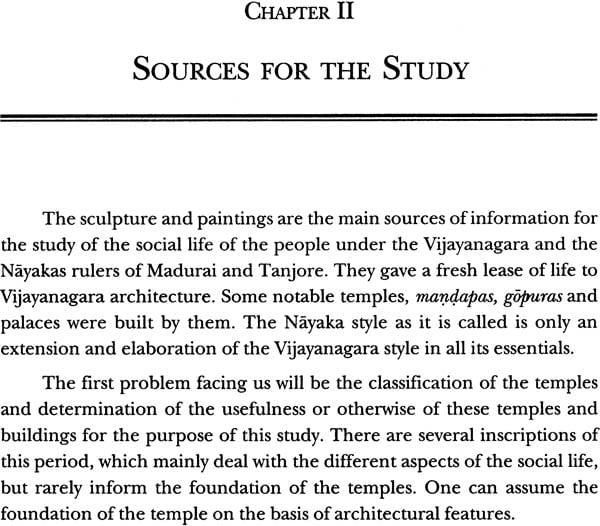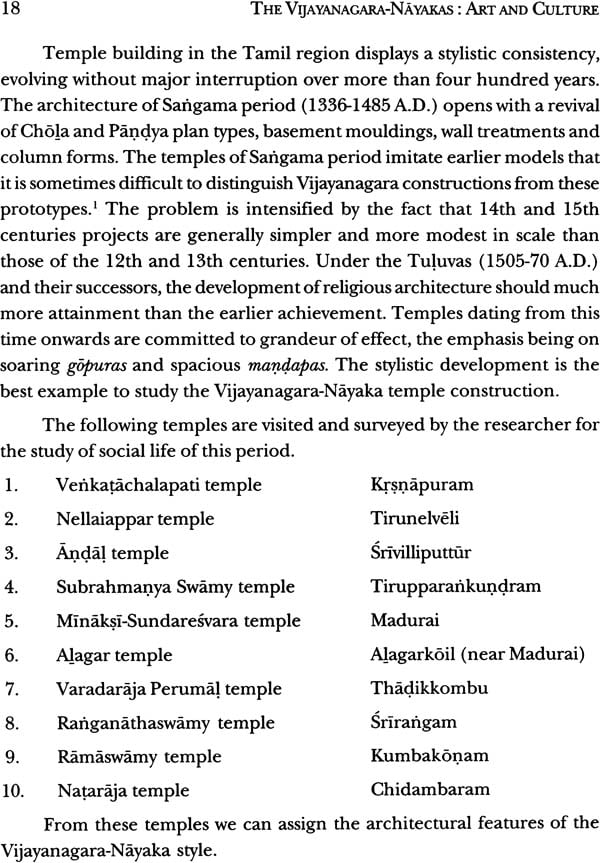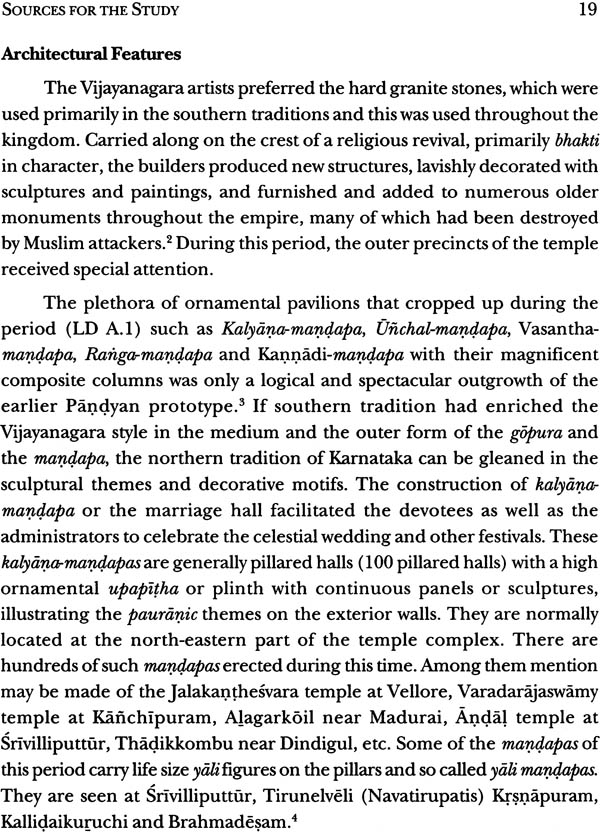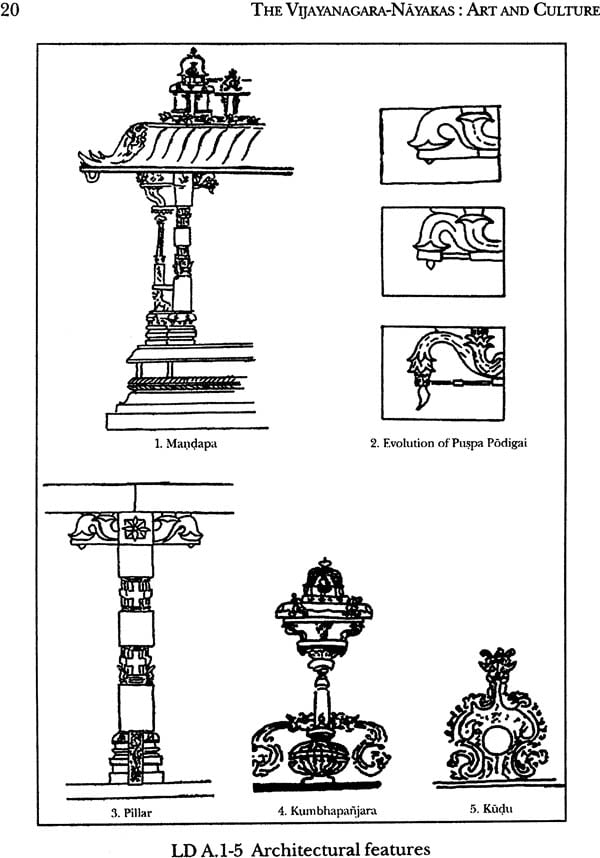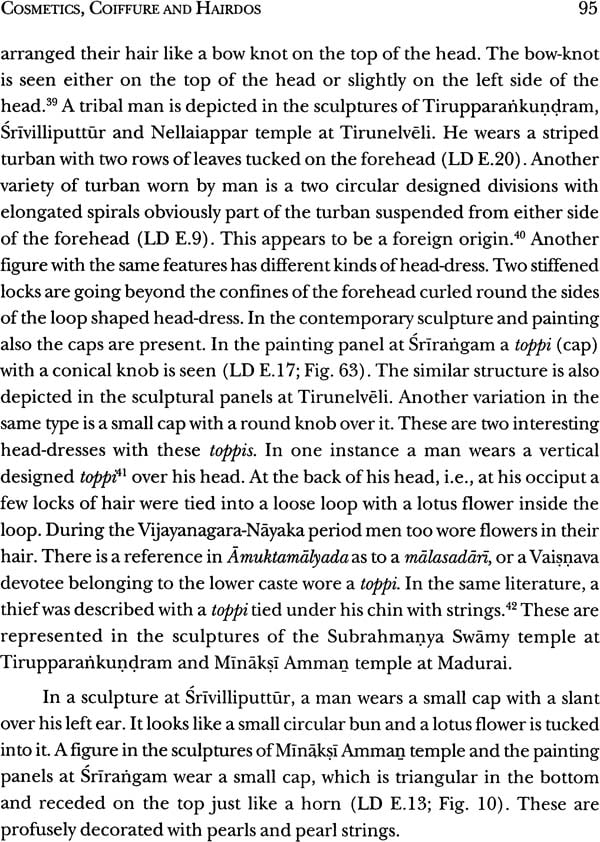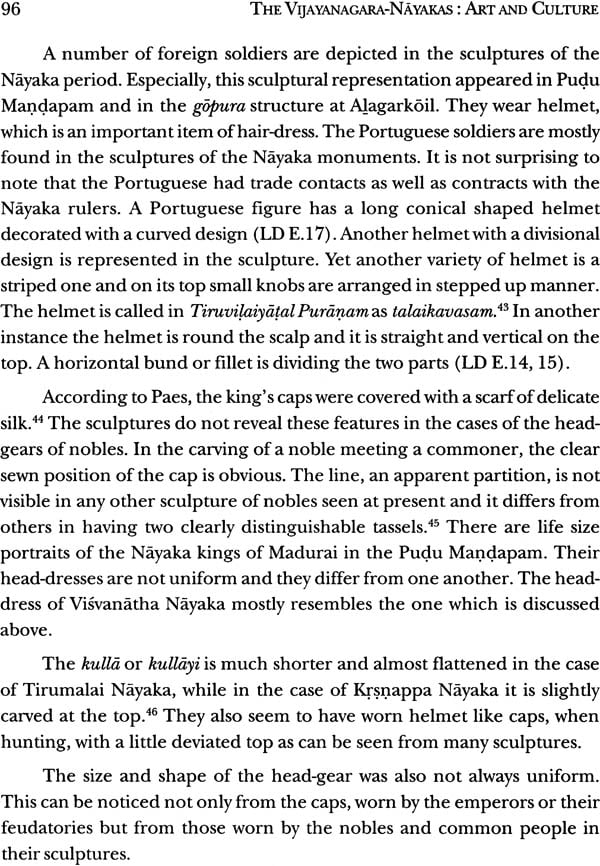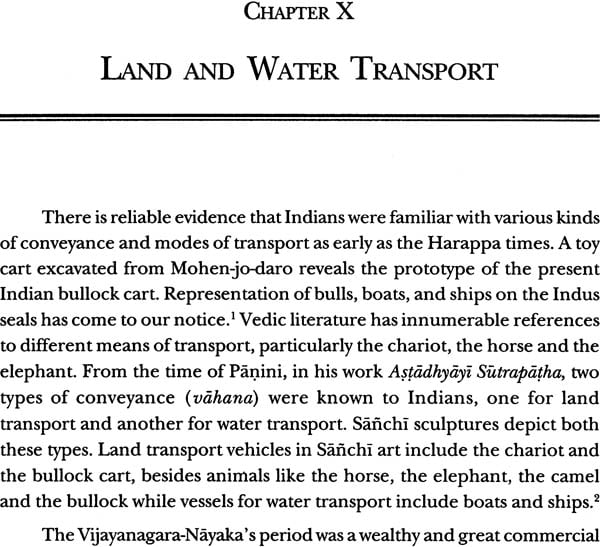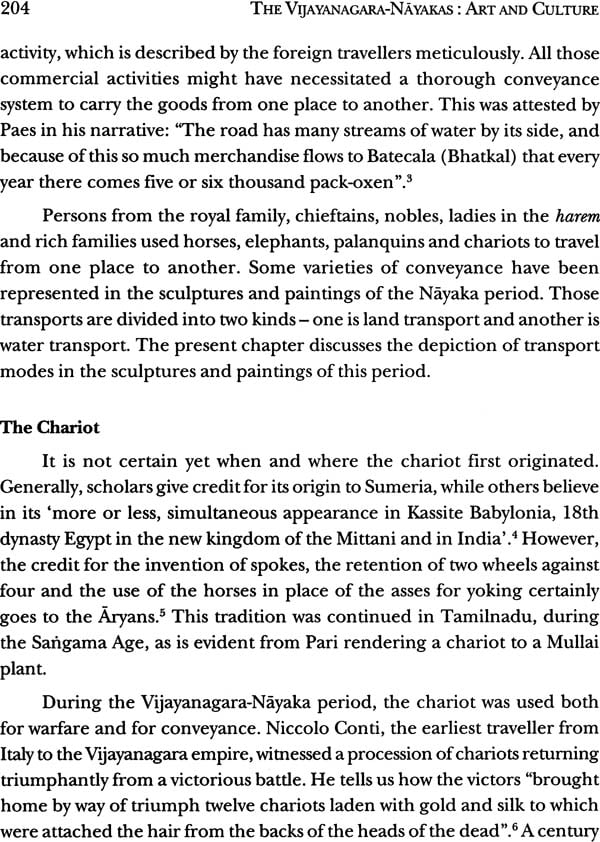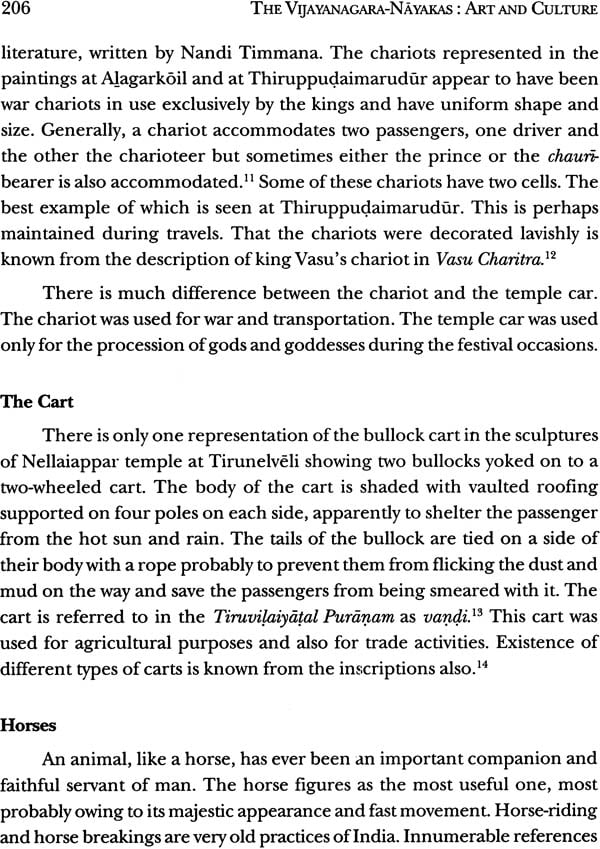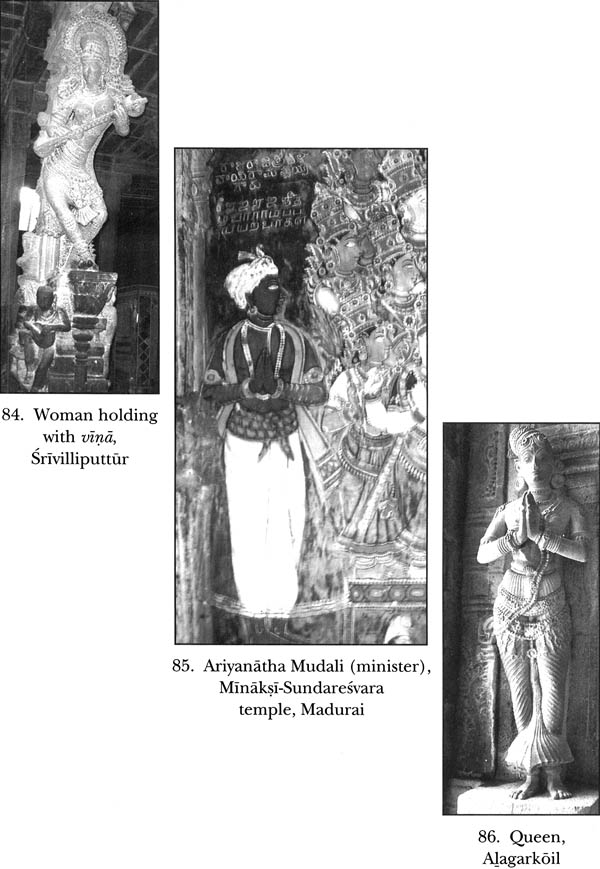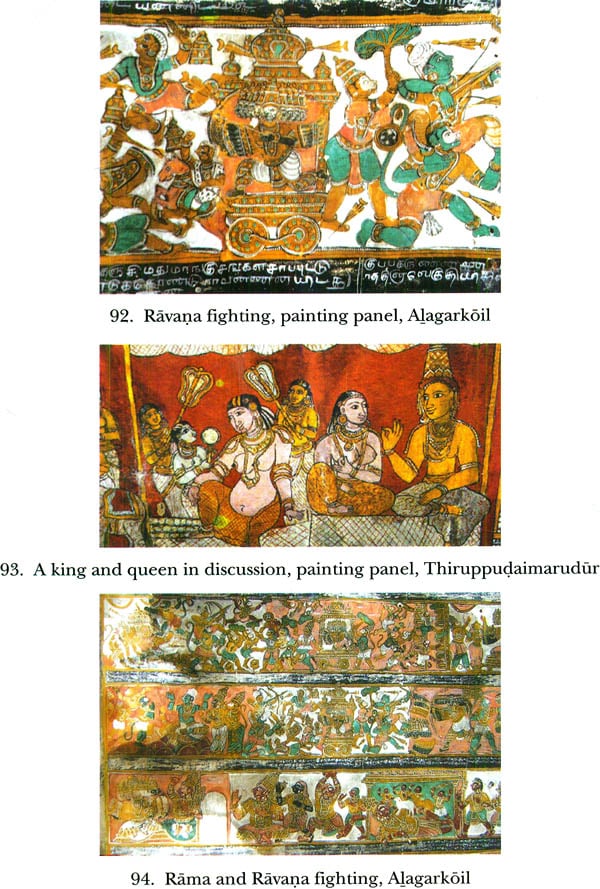
The Vijayanagara Nayakas Art and Culture
Book Specification
| Item Code: | NAL943 |
| Author: | A. Mahalingam |
| Publisher: | Sharada Publishing House |
| Language: | English |
| Edition: | 2012 |
| ISBN: | 9788188934904 |
| Pages: | 300 (14 Color and 98 B/W Illustrations) |
| Cover: | Hardcover |
| Other Details | 9.5 inch X 7.0 inch |
| Weight | 970 gm |
Book Description
The present work has taken it as a mission to unravel the social life of the contemporary people as revealed from the sculpture and painting of the Vijayanagara-Nayaka period. The work brings to limelight the technical deviation of the Nayaka artists from the earlier art tradition of the Tamil country. This study also traces out the development of sculptures and painting from the earliest times to the Vijayanagara-Nayaka period. Besides, this work focuses the sociological factors such as pattern of dress, ornaments, coiffure, performance of dance and music, use of household articles, condition of army and war weapons, the mode of transports, social customs, festivals, and entertainment as depicted in the sculpture and paintings of this period.
Dr. A. Mahalingam did M.A. in History and pursued his M.Phil. and Ph.D. in Art-History at the Madurai Kamaraj University. He has worked as research associate in the UPE project of the Same institution for three years. At present, he is Assistant Professor in the Department of Medieval History. School of Historical Studies. Madurai Kamaraj University.He has more than 20 articles in the national and regional levels to his credit. He has also served as Editorial Committee Member in the Proceedings of South Indian annual volumes. He has been awarded the UGC major research project in 2011.
The present work entitled,”The Vijyanagara-Nayakas: Art and Culture” is the result of genuine attempt made to study and analyse the socio-cultura; aspects of the Vijyanagara-Nayaka period from the sculptures and paitings covering only principal monuments of Madurai and Tanjore region. However, this work might have left certain aspects of the temples under study untouched and I humbly admit that it would be really difficult to include everything in detail in a work like this with specified objective, motive and inspiration.
Many works have been produced to describe the art and architecture of this period. But their social impact is not dealt seriously so far. Therefore, the present work has taken it as a mission to unravel the social life of the contemporary people as revealed from the sculptured and paintings of the Nayaka period. The present work has also brought to light the technical deviation of the Nayaka artists the earlier art tradition of the Tamil country. This study focuses the sociological factors such as pattern of dress, ornaments, coiffure, dance and music, use of household articles, army and war weapons, the mode of transports, social customs, festivals and entertainments as depicted through the sculptures and paintings of the Nayaka period. All these socio-cultural aspects are analysed with the corroborative contemporary sources, i.e., Tamil and Telug literature, inscription and foreign’s accounts.
From the middle of the 16th century A.D. the Nayakara system became a prominent feature of the Vijayanagara provincial organization. Under this system, the king was regarded as the owner of the soil and he distributed lands to his dependents, who were called the Nayakas. The Nyakas ruled over their territories with a great measure of freedom. In return they paid a fixced annual contribution to the imperial government and maintained a sufficient number of troops, and helped the king in his wars. In course of time, the Nayakaship became hereditary, when the central control grew weak and inefficient. The Nayakas of Madurai and Tanjore ruled as the subordinated of the Vijayanagara and soon rose to prominence.
Historians are among the first to have recognized the significance of The Vijayanagara and Nayaka period. They have reconsidered the political structure of the empire, investingated the peasant economy of large land holding and examined the accounts of the lucrative overseas trade.
Eminent historian Robert Sewell’s work’ A Forgotten Empire’(1900) is a compilation of the foreigner’s account. It describes the political, socio-cultural and economic activities of the Vijayanagara people. B.A. Saletore’s ‘Social and Political Life in the Vijayanagara Empire’ (1927); T.V. Mahalingam’s ‘Administration and Social Life under Vijayanagara’ (1940); and Burtor Stein’s The Cambridge History of India- Vijayanagara (1989), deals with the socio-political and economic conditions of the Vijayanagara period. They rarely speak about the Nayaka period through it was contemporary to the Vijayanagara.
Some of the works which emphasize on the Nayaka OF Tamilnadu are V. Rangacharya’s The History of the Naik Kingdom of Madurai’ (1914), R. Sathyanatha Aiyar’s History of the Nayakas of Madura’ (1924) and ‘Tamilaham in the 17th century’ (1956). They mostly deal with the political and religious history of the region. D. Devakunjari’s ‘Madurai through the Ages’ describes the history, art and culture of the Madurai kingom and its surroundings upto 1801. V. Vriddhagirisan’s work ‘The Nayakas of Tanjore’ Tanjore. The joint efforts of V. Narayana Rao, D. Shulman and S. Subahmanyam, ‘Symbols of Substance: Court and State in Nayak Period, Tamilnadu’ (1992) given a description of the country life of the Nyakas, development of political patterns, geo-ecological environments, etc.
Historians of Indian art generally express a preference for earlier phases, especially in their search for the origins of architectural forms and iconic motifs. One of the first champions of Indian architecture, James Fergusson wrote a book entitled ‘History of Indian and Easteen Architecture’ (1876) which reserves more pages of the study of Dravidian Architecture. He concluded that the stylist innovations appearing for the first time in its architecture would inevitably have led in a short time to the new style of the Nayaka dynasty.
Ananda K. Coomaraswarmy, in his ‘History of Indian and Indonesian Art’ (1965) (first pubished in 1927), briefly reviewed the major monuments art Vijayanagara. He called the Mahanavami plalform as ‘Dasara Dibba’ is cursorily mentioned as being the best example of a basement decorated with frizes. A serious attempt at putting the architecture and art of the Vijayanagara site in a wider context was made by Brown, in his ‘Indian Architecture – Buddhist and Hindu’ (1942). According to him, “It is a record in stone of a range of Ideals, sensations, emotins, prodigalities, abnormalities, of forms and forlessness and even eccentricities, that only a super imaginative mind could conceive and only an inspired artist could reproduce’. In Benjamin Rowland’s ‘The Art and Architecture of Indian’ (1953), Vijayanagara is briefly mentioned. J.C. Harle’s ‘The Art and Aechitecture of the Indian Subcontinent’ (1986) describes that “the Nyakas style, however, is largely based upon the Vijayanagara style, whose emergence, spread an eventual dominance during the 15th and 16th senturies in Tamilnadu and instant recognizability of its most typical structure, the mandapa, is one of the most remarkable phenomena in the history of Indian art and architecture. G. Sethuraman’s, ‘Socio-cultural and Art History of Tamilnadu’ (in Tamil, 1995) is a comprehensive and thorough based on field survey and it explains the are architecture, sculpture and painting of the Vijayanagara-Nayaka period. George Michell, in his recent study on Architectural and Art of Southern India, Vijayanagara and the Successor States’ (1995) directs scholars to a more balanced and comprehensive understanding of the seminal importance of the art of the Vijayanagara, both in its local development and in its subsequent influence throughout the region. A.L. Dallapiccola and Anila Varghese’s monographic work ‘Sculpture at Vijayanagara, Iconography and Style’ (1998), describes that the new artistic idiom was in due couse disseminated throughout the whole Vijayanagara empire and eventually developed into the Nayaka sculptural style of the 17th and 18th centuries.
| Preface | ix | |
| Acknowledgements | xi | |
| List of Illustrations | xiii | |
| Chapter I | Introduction | 1 |
| Chapter II | Sources for the Study | 17 |
| Chapter III | Development of Sculptures and Paintings | 35 |
| Chapter IV | Dress | 59 |
| Chapter V | Cosmetics, Coiffure and Hairdos | 85 |
| Chapter VI | Personal Ornaments | 105 |
| Chapter VII | Music, Musical Instruments and Dance | 135 |
| Chapter VIII | Army and Was-Weapons | 169 |
| Chapter IX | House-hold Articles | 187 |
| Chapter X | Land and Water Transport | 203 |
| Chapter XI | Social Customs, Festivals and Entertainments | 219 |
| Conclusion | 237 | |
| Glossry | 241 | |
| Bibliography | 251 | |
| Index | 265 |
